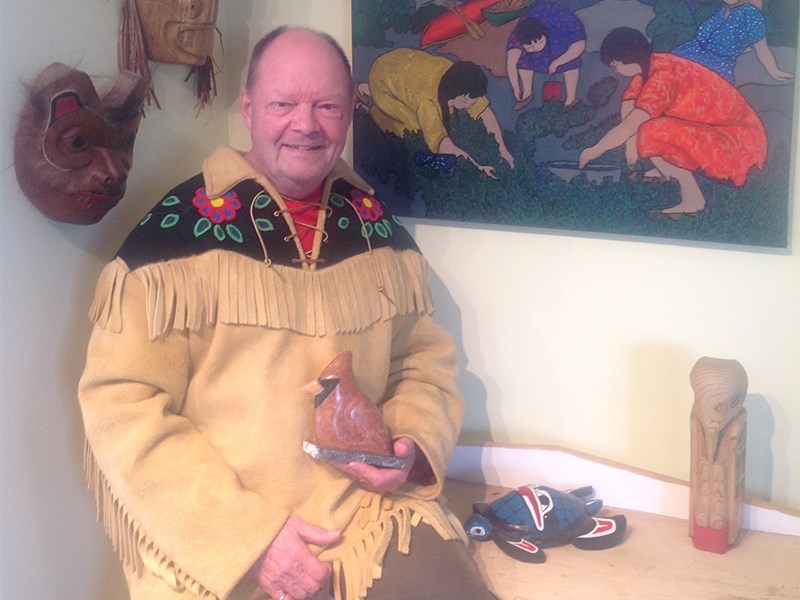Carver and Powell River resident Richard Benson, who describes himself as more of a hobbyist than an artist, has been carving soapstone for 14 years. His pieces of iconic Canadian wildlife, such as loons, bears and whales that express the experience of wilderness, are on permanent display at Artique artist collective gallery on Marine Avenue.
How difficult is it to carve in stone?
It’s not difficult at all. It depends on the type of stone because soapstones vary, all the way from Brazilian, which is one of the most widely used because it’s quite soft, to various types of generic soapstone that become harder and harder. It depends how much time you want to spend on a piece, what kind of colour you’re looking for and what you’re carving.
Do you find inspiration from the stone?
Wouldn’t I love to tell you that it speaks to me when I see it. In reality, when you surround yourself with pieces of stone, occasionally, whether it’s the colour or the graining in it, the stone might say that it would make a great bear or raven. Generally, you look for a stone that is going to give you the result you’re looking for.
How do you go about carving a piece?
I’ll start off with a concept of a loon, or several pictures of loons or bears, and set them up on my work table to refer to. After a number of years you know what you’re looking for and you might not need to access any of your resource material until you get to a final stage and the tilt of the head isn’t quite right. The only time I do things where I don’t refer to a picture is if I’ve done something a number of times.
Which medium do you prefer, wood or stone?
I find it easier to work with stone. I found wood more difficult because the graining in it is very sensitive. Most of what I do, if I was carving in pine or basswood, you couldn’t make many mistakes with, and you have to be very, very good at sharpening your gouges and knives. I was never very good at that. The wonderful thing about stone is you never have to sharpen anything. You just use files and knives.
Have you ever been close to completing a piece and it breaks?
With stone, most of it is built up by sediment deposit. It may seem uniform but there is usually graining through it. When they break, it will be on a sand fault that you may or may not be aware of, so the breaks are usually very clean. If it hasn’t been caused by dropping on the floor, the pieces go back together beautifully and you wouldn’t know it even happened.
For more information, go to Benson’s profile on artiquebc.ca.



